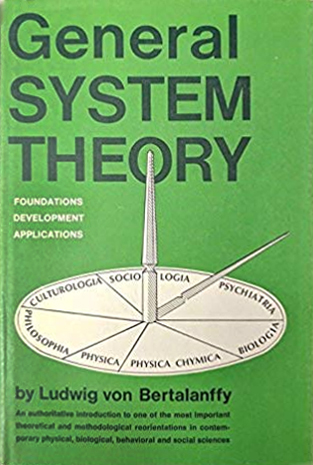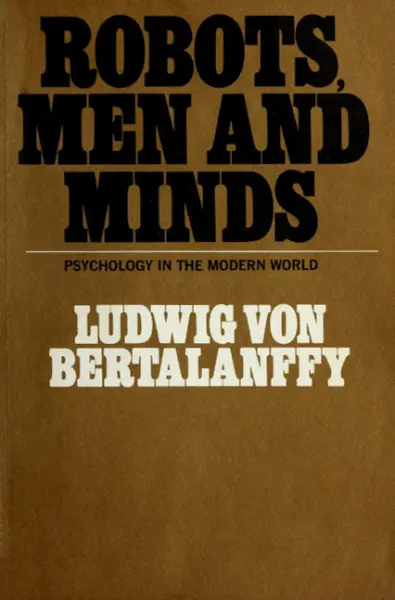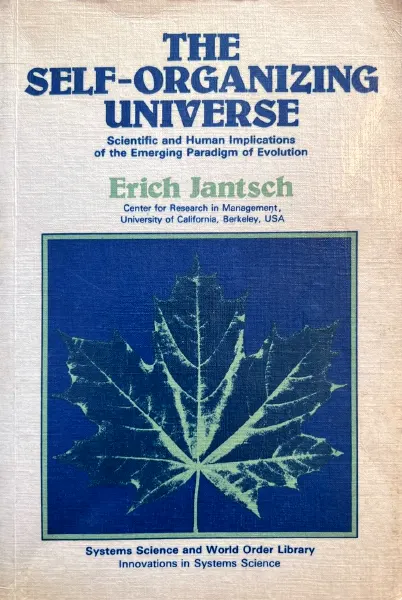The Library of Consciousness
of Consciousness

General System Theory
In his seminal work, biologist Ludwig von Bertalanffy outlines a theory of systems that breaks down disciplinary boundaries and argues that there are general principles and laws applicable to systems of all kinds. He contends that phenomena should be viewed not in isolation but as components of systems interacting with their environments. Bertalanffy proposes that there are commonalities across biological, physical, and social systems that can be explored through systems thinking. He suggests the need for an overarching systems science to uncover these universal system principles. The book develops key concepts like open and closed systems, steady states, growth, feedback, homeostasis, differentiation, hierarchy, and emergence. General System Theory was groundbreaking in its interdisciplinary approach and helped foster the growth of systems theory across academia and society.
Mind Outside Brain
We approach the problem of the extended mind from a radically non-dualist perspective. The separation between mind and matter is an artefact of the outdated mechanistic worldview, which leaves no room for mental phenomena such as agency, intentionality, or feeling. We propose to replace it by an action ontology, which conceives mind and matter as aspects of the same network of processes. By adopting the intentional stance, we interpret the catalysts of elementary reactions as agents exhibiting desires, intentions, and sensations. Autopoietic networks of reactions constitute more complex super-agents, which moreover exhibit memory, deliberation and sense-making. In the specific case of social networks, individual agents coordinate their actions via the propagation of challenges. The distributed cognition that emerges from this interaction cannot be situated in any individual brain. This non-dualist, holistic view extends and operationalises process metaphysics and Eastern philosophies. It is supported by both mindfulness experiences and mathematical models of action, self-organisation, and cognition.
On Self-Organizing Systems and Their Environments
An adaptation of an address given at The Interdisciplinary Symposium on Self-Organizing Systems in Chicago, Illinois. Von Förster argues self-organizing systems don't exist in isolation but require an environment to draw energy and order from. He defines measures of order and mechanisms whereby order arises, including via internal "demons" that decrease system entropy and external "demons" that increase maximum possible entropy. Overall, some noise helps systems remain adaptable.

Robots, Men, and Minds
Based on lectures delivered as The Inaugural Lectures in The Heinz Werner Lecture Series at Clark University (Worcester, Mass.) in January 1966, the book introduces new conceptions of humans and their world. After discussing the advantages and drawbacks of humanity's propensity for the symbolic construction of reality, it focuses on the systems approach to an understanding of the species. The author warns against the common error of identifying cybernetics with general systems theory. No matter how complex the cybernetic system, it "can always be resolved into feedback circuits" and thought of in terms of "linear causality." The regulative behavior of general systems is determined by goal-directed, dynamic interaction between many forces and variables in an open system. Bertalanffy points out that "no comprehensive theory of systems exists today." As a model, however, the approach has many advantages, such as obviating the need for the "ghost in the machine" and suggesting some solutions to the mind-body problem.
Speculations Concerning the First Ultraintelligent Machine
An ultra-intelligent machine is a machine that can far surpass all the intellectual activities of any man however clever. The design of machines is one of these intellectual activities; therefore, an ultra-intelligent machine could design even better machines. To design an ultra-intelligent machine one needs to understand more about the human brain or human thought or both. The physical representation of both meaning and recall, in the human brain, can be to some extent understood in terms of a subassembly theory, this being a modification of Hebb's cell assembly theory. The subassembly theory sheds light on the physical embodiment of memory and meaning, and there can be little doubt that both needs embodiment in an ultra-intelligent machine. The subassembly theory leads to reasonable and interesting explanations of a variety of psychological effects.

The Self-Organizing Universe
The evolution of the universe—ranging from cosmic and biological to sociocultural evolution—is viewed in terms of the unifying paradigm of self-organization. The contours of this paradigm emerge from the synthesis of a number of important concepts, and provide a scientific foundation to a new world-view which emphasizes process over structure, nonequilibrium over equilibrium, evolution over permanency, and individual creativity over collective stabilization. The book, with its emphasis on the interaction of microstructures with the entire biosphere, ecosystems etc., and on how micro- and macrocosmos mutually create the conditions for their further evolution, provides a comprehensive framework for a deeper understanding of human creativity in a time of transition.
The Vision of a Better World
Two visionaries, Tom Munnecke and Barbara Marx Hubbard, engage in an uplifting dialogue exploring the emergence of human creativity and consciousness. They trace inspirations from mentors like Jonas Salk, who recognized futuristic possibilities in Hubbard, and Buckminster Fuller, who affirmed humanity's potential. Together they shine light on the crisis of our times as the birth pangs of a new civilization, calling us to connect with the creativity arising globally. Their exchange weaves threads of hope and positivity, envisioning a future where all people actualize their gifts in service of our world.